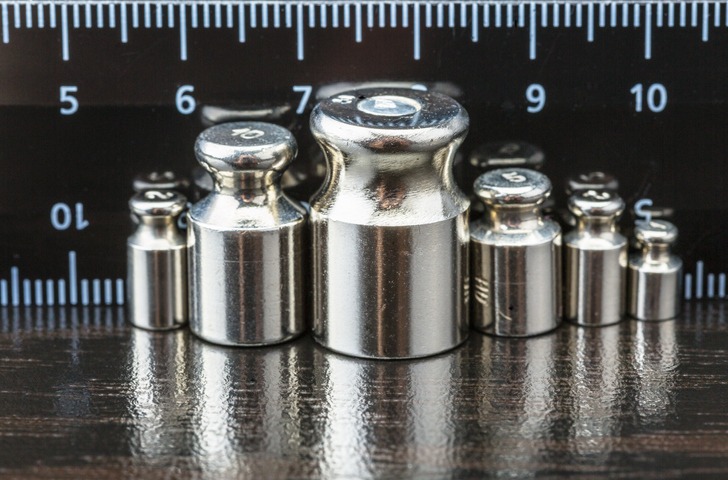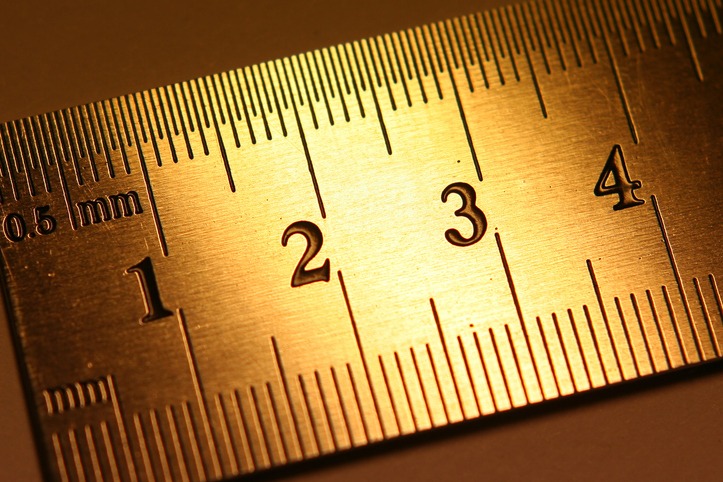A unified metric system is by far the greatest invention of humankind. No matter where you are in the world, one thing that remains the same apart from a few other things is the metric system. The history of the metric system began during the 17th and 18th centuries when Europe was experiencing a wave of intellectuals and philosophers called the Age of Enlightenment.
The intellectuals at the time used length and weight derived from and inspired by nature along with their fractions and decimal multiples. Soon, it became the standard of both Europe and France.
With time, the system was updated and reached a point where the entire world adopted it. Steering the world from hundreds of ways of measurement towards a standard and global metric system and international system of units is an exceptional feat by all means. To understand how this system was established, we ought to re-visit history and discover where and how it all began.
The Age of Enlightenment
The metric system’s history dates back to the early ninth century, when much of France was a part of the Holy Roman Empire but later became a part of France itself. At the time, Emperor Charlemagne standardized the units of measure. He worked hard to standardize the units for mass and length throughout his empire.
However, when the empire disintegrated into separate nations, the standards also diverged. The Magna Carta in England stated that there should be standard measures for corn, ale, and wine throughout the kingdom. Similarly, there should be a standard width of russet, dyed cloth, haberject, etc.
The metric system’s history is often correlated with the French, but other prior developments formed the basis of the first metric system. During the age of enlightenment, when humanity was progressing towards remarkable scientific inventions, the only thing that hindered the momentum was the problem in the measurement standard.
The timeline highlights that Europe used Roman numerals to represent numbers during the early medieval era. However, the Arabs used the Hindu numeral system. Then, Fibonacci published his book Liber Abaci in 1202, introducing the concept of positional notation in Europe.
This was a time when rational and irrational numbers were argued. As a result, Simon Stevin stepped up and generalized the use of the decimal system in Europe. The year 1586 saw Stevin publishing a small pamphlet called “the tenth,” which historians credit for serving as the basis of modern notation for decimal fractions.
Body Measures and Artefacts
Since the time of Emperor Charlemagne, the standard of length was the measure of the body that ran from fingertip to fingertip of the outstretched arms of a large man. At the time, an iron bar, which was considered the most durable substance in the Middle Ages, was used to make an artifact to represent the standard.
However, with time, the problems of non-reproducible artifacts became evident as they were either stolen, rusted, or simply lost at times. When a new royal standard had to be cast, it was different from the old one, and therefore, the replicas of both old and new ones popped up and were used. The artifact was called “toise” and existed throughout the 18th century.
Clocks and Pendulums
Dutch Scientist Christiaan Huygens, in 1656 invented and introduced the pendulum clock featuring a pendulum that marked the seconds. This proposed that its length should be used as a standard unit. But soon, it was realized that the pendulum’s length varied in different locations.
John Wilkins, an English Clergyman in 1668, introduced a coordinated unit system for volume, mass, area, and length. He identified the half-beat of a pendulum in one second as the standard unit for length, while square and cubic standards were considered units of area and volume.
Moreover, In 1670, Gabriel Mouton, a French astronomer and abbot published the book “Observations of the apparent diameters of the Sun and Moon.” He suggested that the scientists use a decimal system of measurement of length for international communication. The system would be based on the dimensions of the earth.
Huygens’ work, along with the likes of Mouton, attracted interest and helped contribute to the determination of a standard unit of length.
Late 18th Century

By the 18th century, it was evident that the metric system order needed to be finalized and implemented, especially between nations who traded scientific ideas. The commencement of the French revolution paved the way for technological advancements for a standard metric system. For instance, Spain had aligned their units of measurement with the royal units of France, while Peter the Great aligned the units of measure with those of England.
In 1783, British inventor James Watt after experiencing complications and difficulties communicating with German scientists, called for a global decimal measurement system. Several years later, the French sent a proposal to Britain and the United States.
The proposal called for developing and establishing a uniform measure of length but was turned down in the British Parliament and United States Congress. For nearly 200 years, the main countries involved in developing the metric system failed to come up with the appropriate standards.
Implementation in Revolutionary France
The Units of Weight and Length
The French Academy of Sciences, in 1790, developed a bench of five leading French scientists to investigate measures and weights. The study was sponsored by Bishop of Autun, also known as Talleyrand, in the French Revolutionary National Assembly. For almost an entire year, the panel conducted different experiments and put forward additional recommendations regarding a new system of weights and measures.
One proposal stated that the unit of length should be based on a fractional arc of a quadrant of the Earth’s meridian, and the unit of weight should be that of a cube of water whose dimension was a decimal fraction of the unit of length.
Whereas the measurements for mass and volume were meant to be derived from the proposed unit of length. The academy attributed the word meter – derived from the Greek word “meteron” for the unit of length. The proposed system was accepted by the French Assembly a year later.
The initial metric unit for mass was termed “gramme, “which described the mass of one cubic centimeter. However, after 1792, “gramme” was adopted despite being too small for practical realization. Therefore, a new prefix “kilo” was added from “kilogramme.” 1795 saw the French law define the metric system, including six new decimal units such as liter, meter, gram, franc, are, and stere.
The system finally became official in France after receiving recognition at the scientific conference in 1799. However, even after being identified as standard units, they remained a topic for on and off debate due to difficulty in understanding by the average populace.
In 1812, Napoleon banned the use of a metric system deeming the fact that the factorability or decimalization of conventional measures is inconvenient. The metric system was reinstated in the 1840s when the French Government urged all Frenchman to adopt the new system.
US Involvement
By the late 1860s, it was felt that better metric standards should be introduced to keep pace with scientific advances. The Congress Act of 1866 legalized the use of the metric system throughout all social and legal dealings, contracts, and court proceedings. Although the system was legalized, the act’s employment was never sanctioned.
In 1875, a metric system review was done, basically called the Convention of the Meter. It was an international agreement to set up well-defined metric standards for length and mass. In 1893, the “Treaty of the Meter” was held in the United States and was signed by 17 countries, including America itself. The internationally adopted metric standards in 1893 still serve as the fundamental measurement standards of the United States.
The new measures of meter and kilogram offered other nations to improve their national measuring standards. The International Bureau of Weights and Measures BIPM was established to ensure the proper implementation of these standards. By 1900, 35 countries had officially accepted the metric system apart from the British Empire by date.
The British Empire remained stuck with the traditional English Units such as inch and pound derived in 1824. The US never adopted the British metric system, which instated a difference between the two units. For instance, the gallon in Britain is different from the US version of the gallon. These units were later measured against the newly derived metric standards to ensure consistency to prevent such flaws and irregularities.
The SI Unit of Measurements
In 1960, an international decimal system for weights and measurements was adopted at the 11th General Conference on Weights and Measurements. SI denotes the metric system in all languages. The signatory nations to the Convention of the Meter adopted simplification of the system and extensive revision. The international system is built on the MKS system that includes even base units;
- Ampere (Current)
- Kelvin (Temperature)
- Meter (Length)
- Kilogram (Weight)
- Mole (Amount of Substance)
- Candela (Visual Intensity)
- Second (Time)
Britain readily adopted the newly developed system of measurements. However, in 1971, the US adopted a 10-year national program to shift to the predominant metric system to which congress proposed the metric conversion act of 1975. However, after certain amendments in the bill, it was adopted in 1992 as part of the Omnibus Trade and Competitiveness Act.
FAQs: The Interesting History of Metric System
1. What makes the metric system so important?
The metric system, or the international system of units, has helped us achieve a unified decimal system. The decimal system makes converting different units like millimeters to meters and grams to kilograms easier. The system is foolproof and is, therefore, is fundamentally used in the global economy.
2. When was the first unified metric system adopted?
The first unified metric system was developed by the French Academy of Sciences in 1790 and was later adopted by France in 1795.
3. Are American and Britain metric systems different?
The American metric system differs slightly from the International standards Britain follows. The US employs different units to the metric system for volume, mass, and distance since there is no base rule for customary measurements.
Final Word
The introduction and development of the metric system were crucial. What started with the meter formed the basis of modern economies and globalization. Today, the capabilities and reach of the metric system are unlimited. It enables high-precision engineering and plays an important role in science and research. And while scientists and researchers compete and push for refining the existing and introducing newer concepts, the overall system is destined to improve with time.

